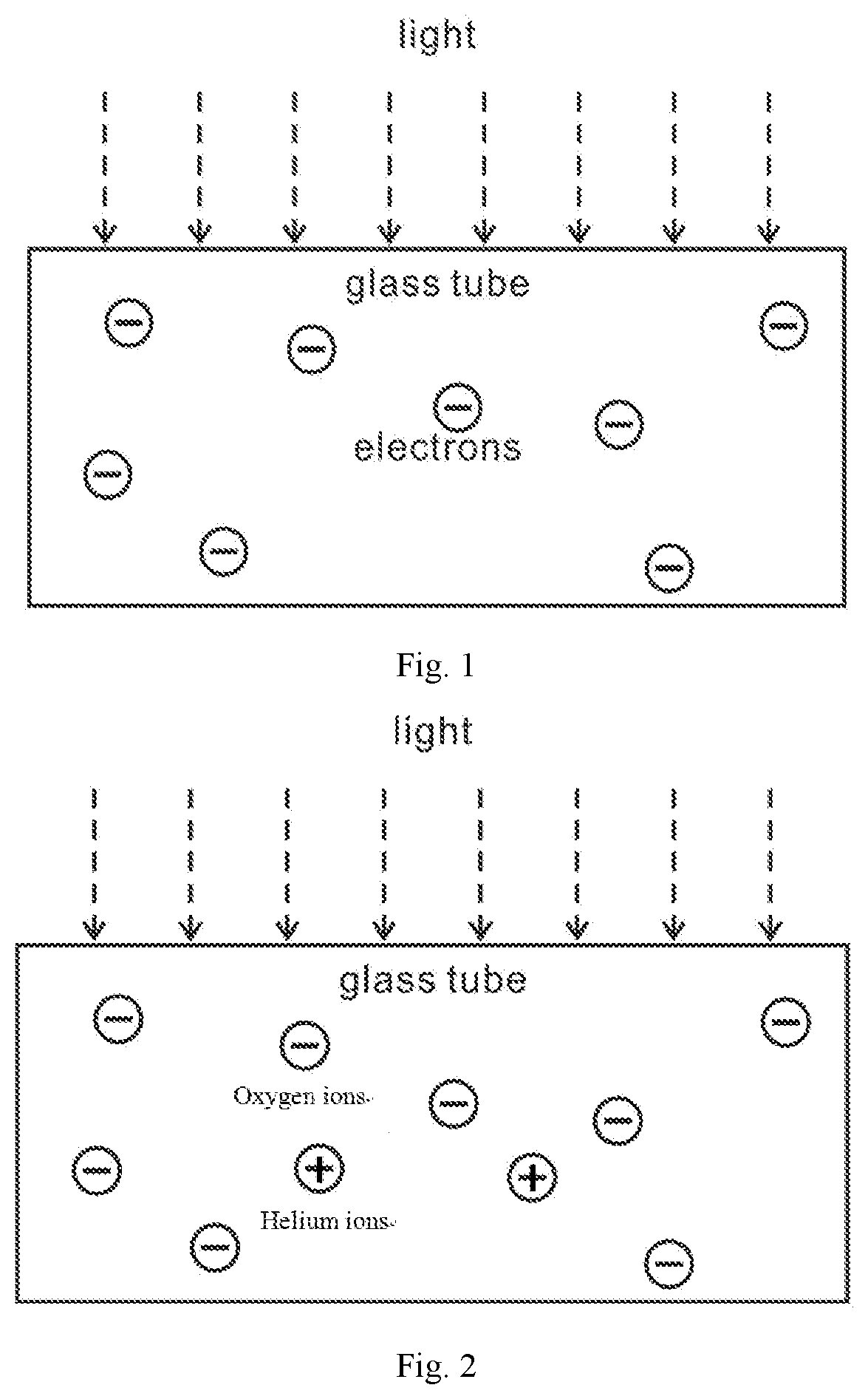Light cooling and heating machine
a technology of light cooling and heating machines, which is applied in the direction of heating and refrigeration combinations, domestic cooling apparatus, and refrigerators, etc., can solve the problems of low solar thermal efficiency and unsuitable magnetic cooling for use in near-room temperature areas, and achieve the effects of increasing the temperature of positive ion gas, and increasing the average kinetic energy
- Summary
- Abstract
- Description
- Claims
- Application Information
AI Technical Summary
Benefits of technology
Problems solved by technology
Method used
Image
Examples
Embodiment Construction
[0048]Two specific embodiments are described below, but specific implementations are not limited to these two examples.
[0049]When used for cooling, the structure of the light cooling and heating machine is shown in FIG. 1. If there is air in a sealed container, the thermal kinetic energy of molecules in the air will affect the cooling effect. Therefore, the sealed container needs to be evacuated first so that the pressure in the sealed container is lower than 1 Pa. After the evacuation, the electron gas is injected, and to allow vibrating electrons to be in a near-field of each other, the average distance between electrons in the sealed container should be much smaller than the wavelength r»λ of incident light. Because there is a following relationship between the average distance r between the electrons and the electron number density nd:
r˜nd1 / 3 (46)
Therefore, there is the following relationship between the electron number density nd and the wavelength λ of incident light:
nd»λ1 / 3 ...
PUM
 Login to View More
Login to View More Abstract
Description
Claims
Application Information
 Login to View More
Login to View More - R&D
- Intellectual Property
- Life Sciences
- Materials
- Tech Scout
- Unparalleled Data Quality
- Higher Quality Content
- 60% Fewer Hallucinations
Browse by: Latest US Patents, China's latest patents, Technical Efficacy Thesaurus, Application Domain, Technology Topic, Popular Technical Reports.
© 2025 PatSnap. All rights reserved.Legal|Privacy policy|Modern Slavery Act Transparency Statement|Sitemap|About US| Contact US: help@patsnap.com

